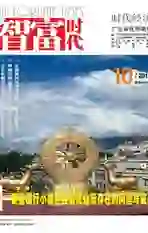倒装句的翻译论述
2018-01-30李小倩马丽莎
李小倩 马丽莎
【摘 要】本文首先對于论文选题背景做了一个介绍,介绍倒装句的定义、结构等背景知识,然后对倒装句进行分类,倒装句其中比较常见的就是有两种形式:部分倒装和完全倒装。接下来就是从倒装句的结构进行分析,然后从几个方面对于英语和汉语中的倒装句进行对比,突出倒装句在中英文中的特点,了解完这些之后就是进行倒装句的翻译,分析其翻译的特点。
【关键词】形式;结构
1. Introduction
As a student of English major, translation is a very important part. The theme of the translation technique, which is in reverse, is very important in my English learning process. On the one hand, I have a series of ideas about the definition, structure, and usage of the inverted sentences and the way I learn to be my best in my own research, so that I can do better translation exercises; On the other hand, it's very important to find the structure of the sentence, whether it's in the translation of the English translation or the Chinese translation, and the structure of the inverted sentences is a challenge, and if you can analyze the structure of the inverted sentences, and the translation of the sentence itself, the translation is a big step, and then you add a few other translation techniques, and then you'll be able to do the translation, and you'll be able to achieve the end of the translation.
2. Background
2.1 The definition of inversion
Inversion is a grammatical device used to express the need for a certain sentence structure and to emphasize the elements of a sentence.
There are two types of invert, on the one hand, it turns the subject and predicate upside down, and it's called Complete Inversion. On the other hand, a Partial Inversion is when the auxiliary verb is only moved to the subject.
2.2 The structure of the inverted sentence
① Only + adverbial clauses or adverbial clauses are placed at the beginning of a sentence, which is partially inverted
② not, little, hardly, scarcely, no more, no longer, in no way, never, seldom, not only, no sooner etc. These negative words or phrases are at the beginning of a sentence and are partially inverted.
2.3 The historical development of inverted structure.
It has been a hot topic to study the inverted structure all the time. Now more and more scholars are paying attention to the development of the inverted structure and supporting their own views with their own papers.
3. Partial inversion and complete inversion
3.1 Partial inversion
① Only + adverbial clauses or adverbial clauses are placed at the beginning of a sentence, which is partially inverted
② not, little, hardly, scarcely, no more, no longer, in no way, never, seldom, not only, no sooner etc These negative words or phrases are at the beginning of a sentence and are partially inverted.
3.2 Complete inversion
① When“here”and “there” are at the beginning of the sentence, it is followed by a complete inversion.
② away, down, in, off, out, over, round, up, etc. These words are at the beginning of a sentence, it is followed by a complete inversion.
4. Information center, discourse cohesion
This paper analyzes the structure of inverted sentences and discusses the function of inverted sentences from the perspectives of information center and discourse cohesion, that is, putting important information at the end of sentences, or achieving sentence balance through inverted sentences.
5. The inverted sentences in English and Chinese are compared
① The definition of invertion between Chinese and English
English inverted sentence is the logical subject after the verb, while some other elements after the verb appear at the beginning of the sentence. Chinese inverted sentence is that the sentence does not follow the sequence of positive sentences, and some elements need to be reversed.
② Both English and Chinese have the phenomenon of subject postposition and predicate preposition, but English can form inverted form with an adverb and an auxiliary verb in advance, while Chinese has no such phenomenon.
6. English-chinese translation and chinese-English translation
English-chinese translation:
① Only then did I fully understand what my father said.
② Not until then did I fully understand my fathers words.
只有到那時,我才充分理解了父亲讲的话。
Chinese-English translation:
① 我很少看到这样漂亮的狗。
7. Conclusion
Through the comparison between English and Chinese inverted sentences, it is found that both English and Chinese have complete and partial inverted sentences. In Chinese, there are modifiers, conjunction and predicate structures, complement inversion, can appear without the main sentence. In terms of information distribution, both English and Chinese written inverted sentences have heavy postpositional components, and the information state is from known to unknown, in accordance with the information order similarity principle. Spoken Chinese inversion, a completely different from the needs of the actual pragmatic and verbal expression, important information, the weight of the heavier blurt out, the first complete rear composition is supplementary meaning, psychological order iconicity principles.
【参考文献】
张克定,“英语倒装句的语篇功能”,2001年10月20日发表
张克定,“倒装句的语用理据”,2002年1月15日发表
徐盛恒,“英语倒装句研究”,1995年10月10日发表
徐李洁,“英语倒装句的再研究”,20063年8月1日发表
杨壮春,“倒装句的认知理据及语用功能”,2003年10月25日发表
杨大然,“优选论与英语方位倒装句研究”,2003年11月25日发表
邓云华,“英汉倒装句”,2002年6月25日发表
葛文峰; 李延林,“英语倒装句的认知语言学研究”,2015年4月15日发表
袁荣儿,“英汉倒装句的结构与功能对比”,2009年12月20日发表
邓奇,“从功能主义视角看汉语口语中的倒装句”2008年4月15日发表
M.Cristina Rinaldi; Luigi Pizzamiglio,“When space merges into language” 2005-6-15
Youngjoong Ko; Jinwoo Park; Jungyun Seo,“Improving text categorization using the importance of sentences”2004-06-15
R. López-Higes Sánchez; S. Rubio Valdehita; M.T. Martín Ara...,“Variabilidad en la comprensión gramatical en el envejecimiento normal” 2008-06-15
Etsuko Ofuka; J.Denis McKeown; Mitch G Waterman; Peter J Roa...,“Prosodic cues for rated politeness in Japanese speech ”2000-06-15
Masao Fuketa; Jun-ichi Aoe,“A fast algorithm of retrieving common sentences”1998-06-15
